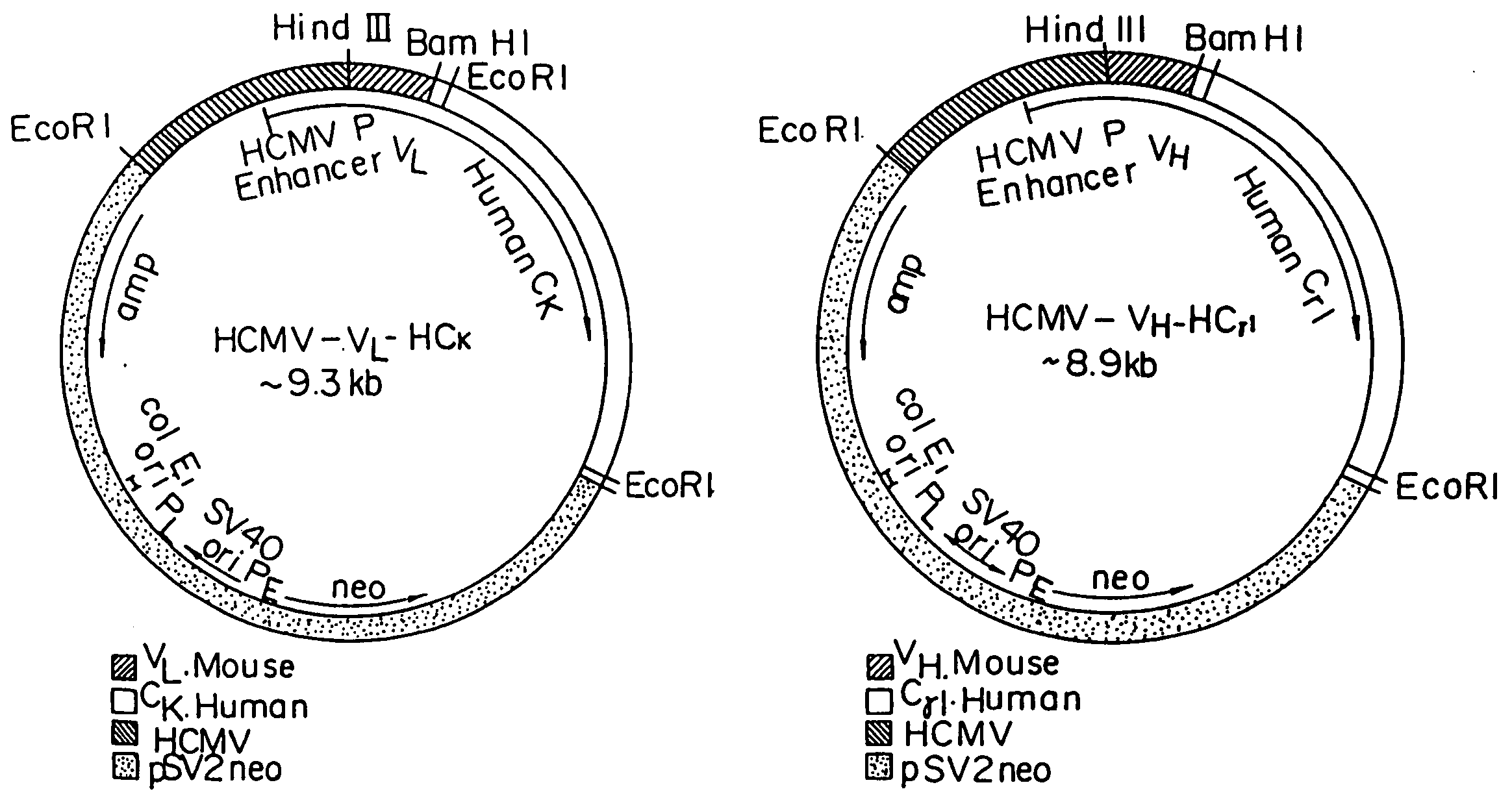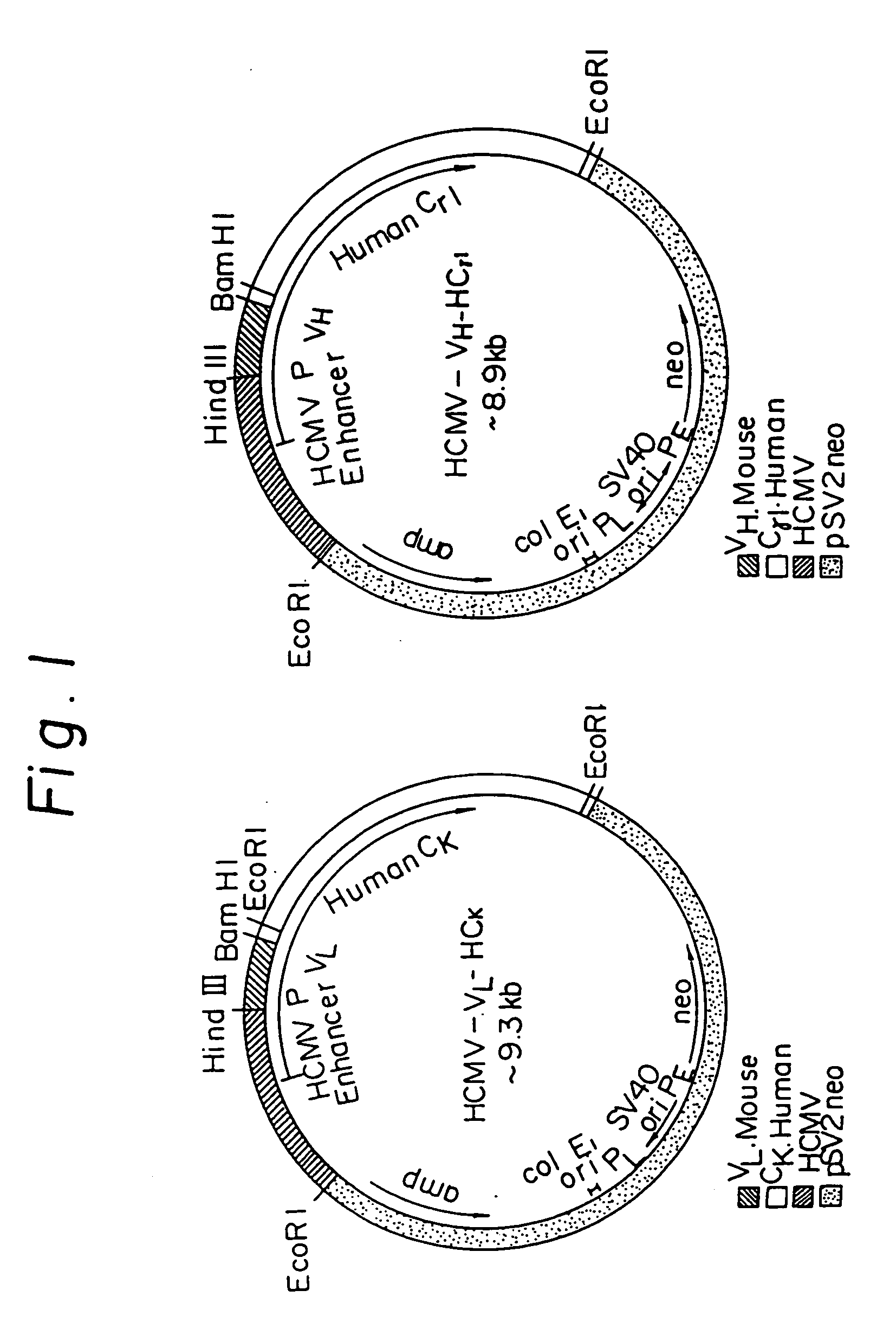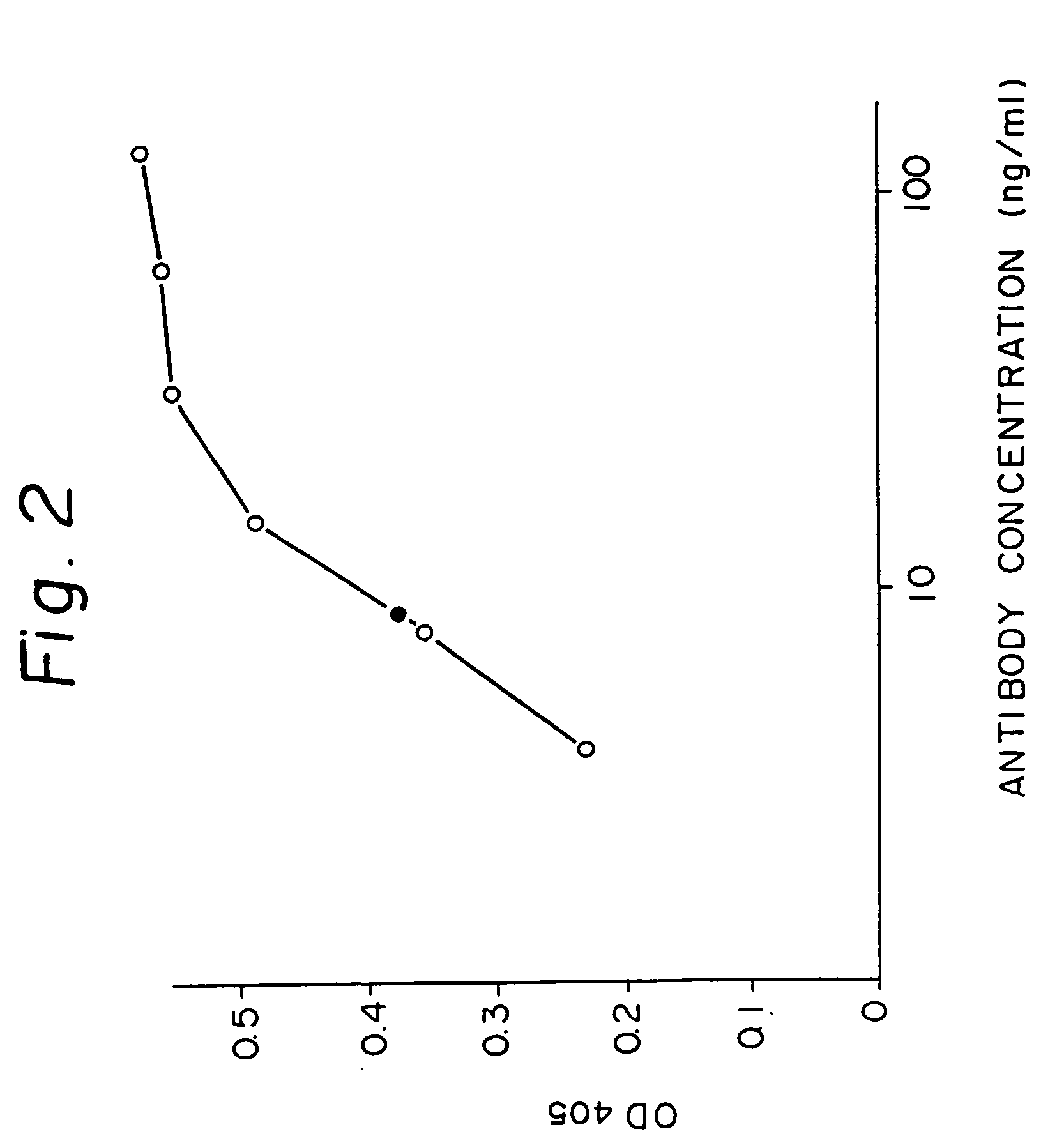Reshaped human antibody to human interleukin-6 receptor
a human antibody and human interleukin-6 technology, applied in the direction of peptides, drug compositions, injected cells, etc., can solve the problems of limited therapeutic value of human antibodies, inability to administer mouse antibodies, and risk of adverse allergic reactions in patients, etc., and achieve less immunogenic
- Summary
- Abstract
- Description
- Claims
- Application Information
AI Technical Summary
Benefits of technology
Problems solved by technology
Method used
Image
Examples
example 1
Cloning of DNA Coding for V Region of Mouse Monoclonal Antibody to Human IL-6R (1)
[0143] A DNA coding for the V region of a mouse monoclonal antibody to a human IL-6R was cloned as follows. [0144] 1. Preparation of total RNA
[0145] Total RNA from hybridoma AUK12-20 was prepared according to a procedure described by Chirgwin et al., Biochemistry 18, 5294 (1979). Namely, 2.1×108 cells of the hybridoma AUK12-20 were completely homogenized in 20 ml of 4 M guanidine thiocyanate (Fulka). The homogenate was layered over a 5.3 M cesium chloride solution layer in a centrifuge tube, which was then centrifuged in a Beckman SW40 rotor at 31000 rpm at 20° C. for 24 hours to precipitate RNA. The RNA precipitate was washed with 80% ethanol and dissolved in 150 μl of 10 mM Tris-HCl (pH 7.5) containing 1 mM EDTA and 0.5% SDS, and after adding Protenase (Boehringer) thereon to 0.5 mg / ml, incubated at 37° C. for 20 minutes. The mixture was extracted with phenol and chloroform, and RNA was precipitate...
example 2
Cloning of DNA Coding for V Region of Mouse Monoclonal Antibody (2)
[0160] Substantially the same procedure as described in Example 1 was applied to the hybridoma PM1, AUK64-7, and AUK146-15, to obtain the following plasmids: [0161] a plasmid pPM-k3 containing a gene coding for a K L chain V region derived from the hybridoma PM1; [0162] a plasmid pPM-h1 containing a gene coding for an H chain V region derived from the hybridoma PM1: [0163] a plasmid p64-k4 containing a gene coding for a K L chain V region derived from the hybridoma AUK64-7; [0164] a plasmid p64-h2 containing a gene coding for an H chain V region derived from the hybridoma AUK64-7; [0165] a plasmid p146-k3 containing a gene coding for a κ L chain V region derived from the hybridoma AUK146-15; and [0166] a plasmid p146-h1 containing a gene coding for an H chain V region derived from the hybridoma AUK146-15.
[0167] Note E. coli strains containing the above-mentioned plasmid were deposited with the National Collections ...
example 3
Sequencing of DNA
[0168] Nucleotide sequences of a cDNA coding region in the above-mentioned plasmids were determined using a kit, Sequenase(™) Version 2.0 (U.S. Biochemical Corp. USA).
[0169] First, about 3 μg of plasmid DNA obtained as described above was denatured with 0.2 N NaOH, annealed with a sequencing primer, and labeled with 35S-dATP according to a protocol of the supplier. Next, the labeled DNA was applied to 6% polyacrylamide gel containing 8 M urea, and, after electrophoresis, the gel was fixed with 10% methanol and 10% acetic acid, dried, and subjected to autoradiography to determine the nucleotide sequence.
[0170] The nucleotide sequence of cDNA coding region in each plasmid is shown in SEQ ID NOs 24 to 31.
PUM
| Property | Measurement | Unit |
|---|---|---|
| Immunogenicity | aaaaa | aaaaa |
Abstract
Description
Claims
Application Information
 Login to View More
Login to View More - R&D
- Intellectual Property
- Life Sciences
- Materials
- Tech Scout
- Unparalleled Data Quality
- Higher Quality Content
- 60% Fewer Hallucinations
Browse by: Latest US Patents, China's latest patents, Technical Efficacy Thesaurus, Application Domain, Technology Topic, Popular Technical Reports.
© 2025 PatSnap. All rights reserved.Legal|Privacy policy|Modern Slavery Act Transparency Statement|Sitemap|About US| Contact US: help@patsnap.com



